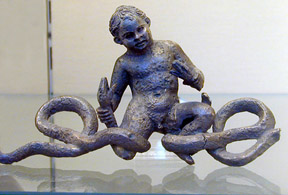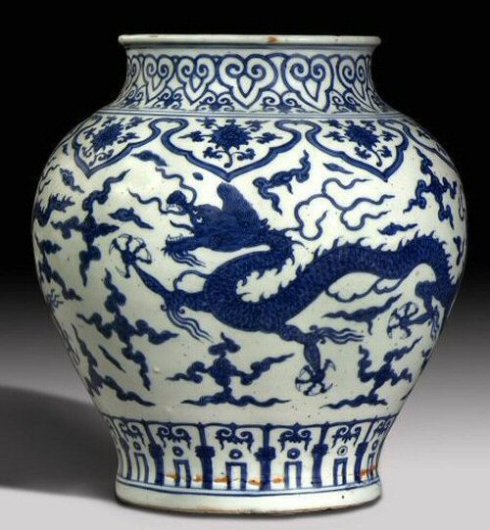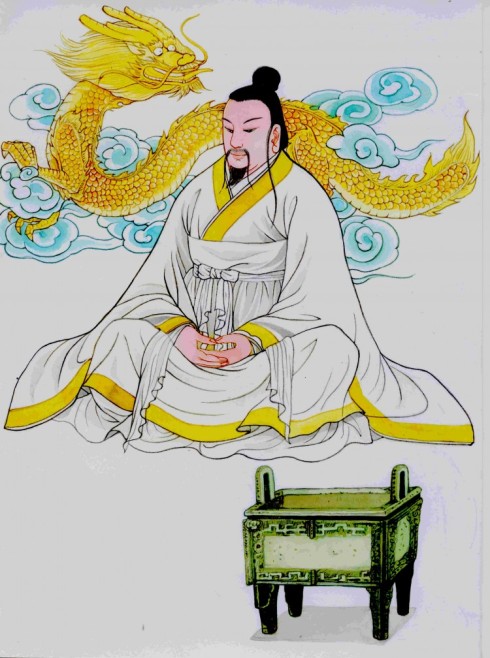You are currently browsing the tag archive for the ‘strength’ tag.
 I really enjoyed the 31st Olympics…but then I have always really enjoyed the Olympics. I was raised in rural America during the end of the Cold War and I love the United State of America with all my heart. I remember the glow of pride when the Star-Spangled Banner would play as the gleaming American stood atop the podium while the glowering Russian looked up from the step below. Not only was it great drama, but it was a bonding event as well. My family would watch the games together—and everyone else in the community would be following the international spectacle too. In the middle of the country, the Olympics reminded a sports-crazed community about different sorts of people who we didn’t see too often in rural Ohio. These days I live in heterogeneous libertine New York—plus I have been around and seen some things—but I still love America and I still feel exactly the same way about the Olympics. Indeed, perhaps the Olympics are even better now that they are untainted by Cold War posturing and now that my experience of the world is broader.
I really enjoyed the 31st Olympics…but then I have always really enjoyed the Olympics. I was raised in rural America during the end of the Cold War and I love the United State of America with all my heart. I remember the glow of pride when the Star-Spangled Banner would play as the gleaming American stood atop the podium while the glowering Russian looked up from the step below. Not only was it great drama, but it was a bonding event as well. My family would watch the games together—and everyone else in the community would be following the international spectacle too. In the middle of the country, the Olympics reminded a sports-crazed community about different sorts of people who we didn’t see too often in rural Ohio. These days I live in heterogeneous libertine New York—plus I have been around and seen some things—but I still love America and I still feel exactly the same way about the Olympics. Indeed, perhaps the Olympics are even better now that they are untainted by Cold War posturing and now that my experience of the world is broader.
Growing up, the sports which the neighbors loved were the big 3 professional sports: basketball, baseball, and, above all, American football. These are large institutional sports with lots of expensive equipment and pettifogging rules. They seem to mostly benefit a bunch of state college administrators and arrogant millionaires. As a child, I found them dull (although I later learned to enjoy them as a beer-swilling observer).
The Olympics however was a rare window to a much finer world of amazing sports! There are sports of true martial prowess: archery, shooting, judo, and fencing. There are sports with horses and sports with boats. There are sports for rugged individualist and sports for teams. All sorts of athletes of tremendously different sizes, shapes, and agility compete and their very different attributes are a source of collective strength. The little 1.3 meter (4 foot 6 inch) gymnast can do amazing things that the juggernaut 2 meter (6 foot 8 inch) shotput thrower who weighs as much as a gnu cannot…and vice versa. The freak with a muscular noodle for a torso and huge flippery feet metamorphoses into a dolphin in the pool. The slender diver morphs into a falcon. It should go without saying that America’s athletes, like Americans, are from every different ethnic backgrounds and walk of life. That tremendous range is a huge advantage in the Olympics…not just because it gives the nation a pool of athletes with lots of different body types and strengths but because it provides people who have lots of different perspectives on hard work and success.
The self-discipline of the athletes is evident not just in their chiseled bodies or lightning speed, but in the intensity of their expressions. And, when they win, the champions typically don’t talk about their “yuge” victories but instead talk about minute differences of grip or stroke or technique …then maybe they enthuse about their families and loved ones. It is very refreshing in our age of PR blitzes and self aggrandizement.
We need to hold these memories in our heart this year, as politicians and effete taste-makers work hard to divide us. The nation needs to remember our original motto: “e pluribus unum”.
America needs to be work harder to be worthy of our hard-working young athletes. The Olympics remind us that we are all on the same team—the Christian fundamentalist divers, the Islamic swordswomen, the atheists, the city kids and country kids, the team players and the rugged individuals, black, white, Asian, Indian, Native American, gay, straight…everyone is so different but they are all working together to tally up all of those medals.
Anyone who aspires to national leadership needs to recognize that, just as team USA needs little gymnasts and huge weight-lifters and all sorts of people in between, the real team USA– the nation itself–requires ever so many more different sorts of folks. We need both the sharp-eyed riflemen from Kentucky and the shrewd-minded accountants from Montclair. We need Jews and Gentiles, Mormons and Taoists, black folks and white ones. We need number people and word people and image people. We need people we don’t even know we need. The people of the United States are heterogeneous but we stand beside each other through any crisis–structural, cyclical, or natural. We are not the “Fiscally Independent and Selfishly Aloof States of America”. Our name is much finer than that.

Back during the glorious infancy of my blog I wrote a great deal about the demi-god Heracles (a.k.a. Hercules)–the greatest classical hero, who slew so many of the children of Echidna (and even grappled with Echidna herself). For some reason, when I was growing up, I always had a mental picture of Heracles as a meat-head who solved every problem by means of brute strength; however, as an adult my perspective on the hero has changed greatly. The craftiness with which Heracles faced problems like the Hydra and the journey to the underworld reveals that his cunning and his political guile became greater and greater as he ground on through his quests and labors towards godhood. A big part of absolute power involves mastering craftiness…and manners. In fact the story of Heracles is really an epic quest to please a picky mother-in-law (but more about this later). At any rate, when his plans went awry, Heracles always had brute strength, but it often rebounded on him and was the source of his greatest problems as well as his greatest victories.

Which brings us all the way back around to Hercules’ first great exploit—which was purely of the brute strength variety. Heracles was the son of Zeus and the beautiful shrewd mortal woman Alcmene (who had a magical pet weasel—but more about that another day). Naturally Hera hated this rival and she chafed at the glorious prophecies of what the child of Alcmene would one day accomplish. Hera tried to prevent the birth of Heracles by means of her subaltern, the goddess of childbirth. When this failed, she resorted to brute force on her own right and she sent two mighty serpents to kill the baby in his crib. Heracles grabbed one of the poisonous serpents in his right hand and the other in his left and throttled them to death with super strength. The first glimpse we get of Heracles is a majestic picture: an infant throttling two great snakes in his bare hands. This image was sculpted and painted again and again throughout the history of western art. It foreshadows Heracles’ difficult life, and his triumph, and his methodology. Here is a little gallery of baby Heracles/Hercules throttling snakes:



 Today is the first day of the Chinese New Year! Happy Lunar New Year to everyone! It’s time for dumplings and fireworks! This is the year of the Water Dragon—an auspicious year (if astrologers are to be believed). Since being born in the year of the dragon is regarded as fortunate, Chinese demographers are projecting a larger than normal number of births this year. If you are looking to have children maybe you should hold off on the partying and go work on that right now.
Today is the first day of the Chinese New Year! Happy Lunar New Year to everyone! It’s time for dumplings and fireworks! This is the year of the Water Dragon—an auspicious year (if astrologers are to be believed). Since being born in the year of the dragon is regarded as fortunate, Chinese demographers are projecting a larger than normal number of births this year. If you are looking to have children maybe you should hold off on the partying and go work on that right now.
The dragon is the de facto symbol of China (and has been so for a long, long time). The mythical creatures appear everywhere in art, architecture, clothing, advertising, and even drawn indelibly on people (as above). Snarky political cartoons about currency manipulation represent China as a dragon in the same way that the United States is always shown as Uncle Sam or an eagle. Five clawed dragons symbolized imperial authority during the era of the emperors. Even in pre-dynastic China the dragon was a central symbol. Dragon statues have been discovered from the Yangshao culture (seven millennia ago).

A Chinese porcelain blue and white 'dragon' jar. Ming Dynasty, Jiajing period (1522-66). Photo Gibson Antiques
Although symbolic of power, strength, and good luck, Chinese dragons are also inextricably linked to water sources. In various myths, dragons represent control over oceans, rivers, lakes, and ponds. They are also linked with stormclouds, rainfall, floods, and rainbows. Some scholars and folklorists believe that the concept of dragons was originally based around actual aquatic animals like saltwater crocodiles (which ranged along the Chinese coast in ancient times), large snakes, and huge catfish.
Because they are composed of features from various real animals, Chinese Dragons perfectly suit the themes of this blog (which has a history of admiring chimerical creatures). Dragons have the body of a serpent, the claws of an eagle, the legs of a tiger, the whiskers of a catfish, the antlers of a deer and the scales of a fish. According to legend, back in the depths of time, the Yellow Emperor, a semi-divine magician, unified China and became the first emperor. The Yellow Emperor’s standard was a golden snake, but whenever he conquered another fiefdom he would add the features of their heraldic animal to his own. As the emperor’s army conquered more and more of China, the snake acquired antlers, talons, fish scales, and barbels.
People born in the year of the dragon are supposed to embody a mosaic of noble traits. Dragons are said to possess intelligence, energy, self assurance, passion, and courageousness. Allegedly water dragons combine these virtues with patience and understanding. I’m not sure how much faith I put in astrology, but I certainly hope this year combines some of these good things.
Gung hay fat choy!







